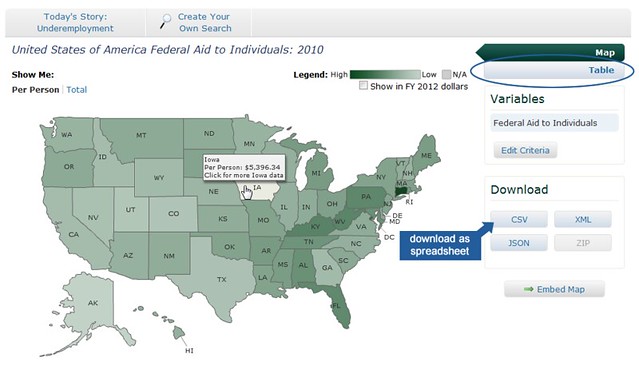The Role of Federal Money in Your State
By
Becky Sweger
Posted:
|
Budget Process,
Transparency & Data
NPP recently examined the role of federal money in Iowa and New Hampshire. Key data in this report came from our Federal Priorities Database and are available to anyone interested in researching other states:
- Federal Aid to Individuals (1993-2010)
- Federal Tax Collection (1998-2010)
Federal Aid to Individuals
Using a report from the U.S. Census Bureau, we created Federal Aid to Individuals to explore total federal spending on direct assistance for individuals. These numbers include everything from Pell grants to federal employee retirement benefits to Social Security payments.
You can see Federal Aid to Individuals here. The default view is a state-level heat map, with darker states representing higher aid-per-person dollar amounts (see below). Hover over a state to see its total. Alternately, click table for a table view, or click CSV to download in a spreadsheet-compatible format. You can also click on individual states to get county-level totals.
Federal Tax Collection
The Federal Tax Collection data show three categories of gross tax collections as reported by the IRS:
- Business: taxes collected from businesses, including taxes on corporate income
- Individual: taxes collected from people – income and self-employment taxes, FICA (both employer and employee share), estate and trust taxes, gift taxes, and excise taxes (e.g.federal taxes on gas and cigarettes)
- Total: sum of business and individual taxes plus unemployment insurance and railroad retirement taxes (taxes paid largely by employers on behalf of their employees).
The database doesn’t (yet) display tax collections per person. However, you can get that number by dividing a state’s tax collection total by its population (available here).
For a comprehensive Federal Priorities Database how-to, please see our ongoing weekly tutorial series.
If you have any questions, feel free to contact the database team at db@nationalpriorities.org.
